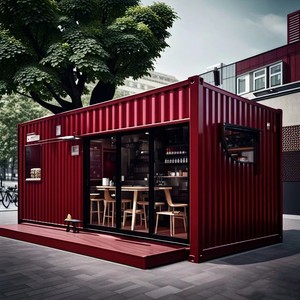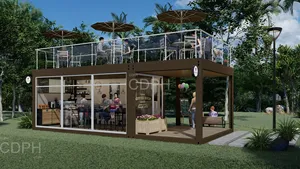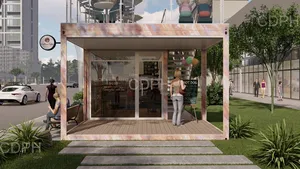
All categories
Featured selections
Trade Assurance
Buyer Central
Help Center
Get the app
Become a supplier

(15881 products available)




















































Often, digital mini kiosks are preferred to the more traditional types.
They are digital kiosks, for instance, that are installed mostly in the retail or restaurant industries for the purpose of self-service. Such types of mini kiosks are furnished with touchscreens for interactive service, menu items, product searches, and order placements. These digital kiosks have the capacity to uplift the quality of service offered by businesses and at the same time cut down on operating costs. Mostly, they are integrated with mobile payment solutions and thus making secure transactions convenient for the customers.Information mini kiosks are another category of these kiosks and they mostly find application in public environments such as museums, libraries, or tourist centers.
> They serve as electronic bulletin boards providing users with information relevant to their locations, for example, maps, event scheduling, and general information. These kiosks help users to interact with the presented data through touchscreens or buttons where users can easily navigate different sections and update sections. In terms of enhancing people's experiences and especially in giving them the right information, information mini kiosks are very critical.The ticketing mini kiosks are especially useful in venues or events where tickets are sold.
These kiosks give clients the opportunity to purchase tickets at their own convenience, thus avoiding the long lines associated with traditional ticket booths. These mini kiosks are integrated with ticketing software and provide clients with options to select their preferred seats and a place where they can make payments. Ticketing mini kiosks are vital in any venue that has a high influx of clients as they help in cutting down waiting time and increasing customer satisfaction.In retail environments, small kiosks are becoming common.
Retail mini kiosks usually provide a limited range of products or services and are intentionally designed to occupy less space than the average store. There can be some retail mini kiosks having self-service capabilities and, therefore, enabling customers to place their orders without the assistance of employees. These kiosks assist in maximizing retail space and in giving customers convenience in shopping.The most appealing aspect of a mini kiosk is its small size.
This allows for installation in places with very high traffic and particularly in those regions where an outlet cannot be installed. Owing to their compactness, these kiosks are set up in shopping complexes, airports, or on street corners to serve customers who are in a hurry or who wish to grab something quickly without going through the long process of shopping.Most mini kiosks are fitted with touch screens to provide users with an interactive experience.
The touch screen acts as the main input device for users to browse menus, select items, and place orders. It makes every step of the process easy and quick for customers, therefore increasing the efficiency of service delivery.Payment integration is also an important feature of mini kiosks.
Many of them are now equipped with electronic payment systems that allow clients to pay using their cards or mobile money applications. This feature is convenient in ensuring all transactions are carried out quickly and in a secure environment, especially in places like restaurants or retail outlets.Depending on the needs and wants of their clients, mini kiosks can be customized in various ways.
Customization can go to the extent of software where specific applications for a certain market are installed to the hardware where the design is aligned with the branding of a company. This flexibility gives businesses a choice to use kiosks that promote their brand and meet their operational needs effectively, whatever they are.Mini kiosks can be utilized fully in the food and beverage industry.
Often, they are used in fast-food restaurants, cafes, or even in places that sell beverages, usually to enable customers to place their orders without having to queue or searching for an attendant. Through these kiosks, customers are able to view menus, place orders, and even make payments, and all this without much interaction with the staff. This helps in reducing waiting time and increasing order accuracy as most of the orders are placed by customers with little or no input from the attendants.In the retail sector, mini kiosks are mainly used to sell a specific range of products.
Be it cosmetics, mobile accessories, or even snacks, retail kiosks are mostly found in malls, airports, and other high-traffic areas. They provide a convenient method of selling goods in a limited space, especially for impulse purchases, and eliminate the need for customers to visit large retail stores. Some kiosks come with touchscreens that help customers to easily browse products and make payments, thus enhancing shopping experience.Mini kiosks are most suitable for ticket sales in places such as theaters, stadiums, or exhibition centers.
They allow customers to purchase tickets at their convenience without having to wait in long lines. These kiosks are usually equipped with seat selection and pricing features, thus giving customers the autonomy to choose their preferred seats and time. When there are multiple ticket purchases, these kiosks are extremely useful in providing quick service and minimizing crowds at the ticketing center.The travel and transport sectors have also embraced the use of mini kiosks.
> Passengers can check in, print boarding passes, and even book tickets using these kiosks that are mostly found in airports and train stations. This automation helps in reducing queues and gives passengers the freedom to complete their journey at their convenience. Incorporating features such as real-time updates and the ability to handle multiple languages makes these kiosks ideal for use in different countries.Mini kiosks are becoming popular in health care and hospital services.
> They enable patients to check in, make appointments, and even settle bills without having to look for an attendant to attend to them. They help in reducing the workload on the reception staff and also contribute to minimizing waiting lines for the patients. These kiosks are particularly useful in big hospitals and health centers that experience a high number of patients daily.The first and most important step in choosing a mini kiosk is to clearly define its purpose.
It must be ascertained if it will be used for food service, retail, ticketing, or for providing information. This will give an overall understanding of the features required in the kiosk, such as payment integration and touchscreen, for it to be interactive with the clients.One more important thing to consider is the place where the mini kiosk will be installed.
It should be assessed whether there is enough foot traffic and whether there are power supply and connectivity issues. Also, one should evaluate the available physical space because, normally, the mini kiosks are compactly designed to occupy very limited space; hence, their installation in constrained spaces is possible.Considering the software part is equally important, especially in the digital era.
It should be ensured that the chosen mini kiosk is running on operating software that can be easily integrated with the existing business systems like POS and inventory management. Customization options are also to be ensured, especially if there is a need for specific applications to be added to the kiosk to serve unique operating needs.So as to ensure customer satisfaction, the user experience of the mini kiosk should be evaluated.
> Features such as a high-resolution touchscreen and simple interface enhance the client experience and ensure that they will use the service. Moreover, various payment options should also be available to enhance the convenience of the customers during their transactions.It also relates to the operations of any business that one should take care of all the possible maintenance issues that might arise.
> Little or no support should be provided for the maintenance and servicing of the kiosk as it can lead to many downtimes. It is also important to consider the warranty and after-sale support in case of any issues or problems with the kiosk, as this would give the owner a guarantee and also boost operational efficiency.A1: As a whole, mini kiosks are versatile and can be used in different environments, from restaurants and retail stores to transportation hubs and events. While digital kiosks mostly find application in the retail and food sectors, information kiosks are often installed in public places like museums. Ticketing kiosks find their places in venues holding events, while retail kiosks work in high-traffic areas like malls.
A2: Yes, most modern mini kiosks are equipped with payment integration features, allowing customers to complete transactions using various methods. These methods often include credit and debit cards, mobile payments, and contactless transactions, making them especially useful in retail, food services, and ticketing scenarios.
A3: Some mini kiosks are specifically designed for outdoor use, featuring weather-resistant materials and screens. For example, kiosks intended for use in outdoor environments like parks, events, or transportation hubs often come with enhanced durability and options for sun-readable screens.
A4: Mini kiosks are advantageous in numerous industries, each serving a distinct function. The food and beverage sector frequently employs kiosks for order placement. In retail, they facilitate product browsing. The travel industry uses them for check-ins, while healthcare facilities deploy them for patient registration and appointments.
A5: Businesses can tailor their mini kiosks in various ways, particularly in software. Custom applications specific to the business can be integrated. Branding elements like colors, logos, and themes can be added. This ensures that the customer experience is consistent with the business's overall brand identity.